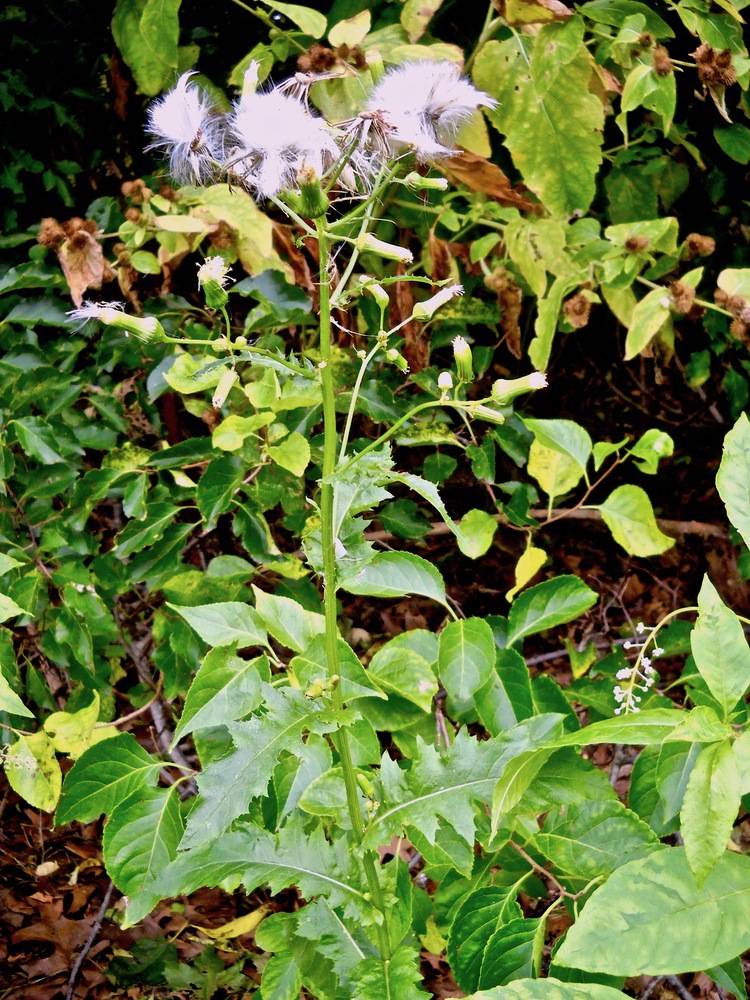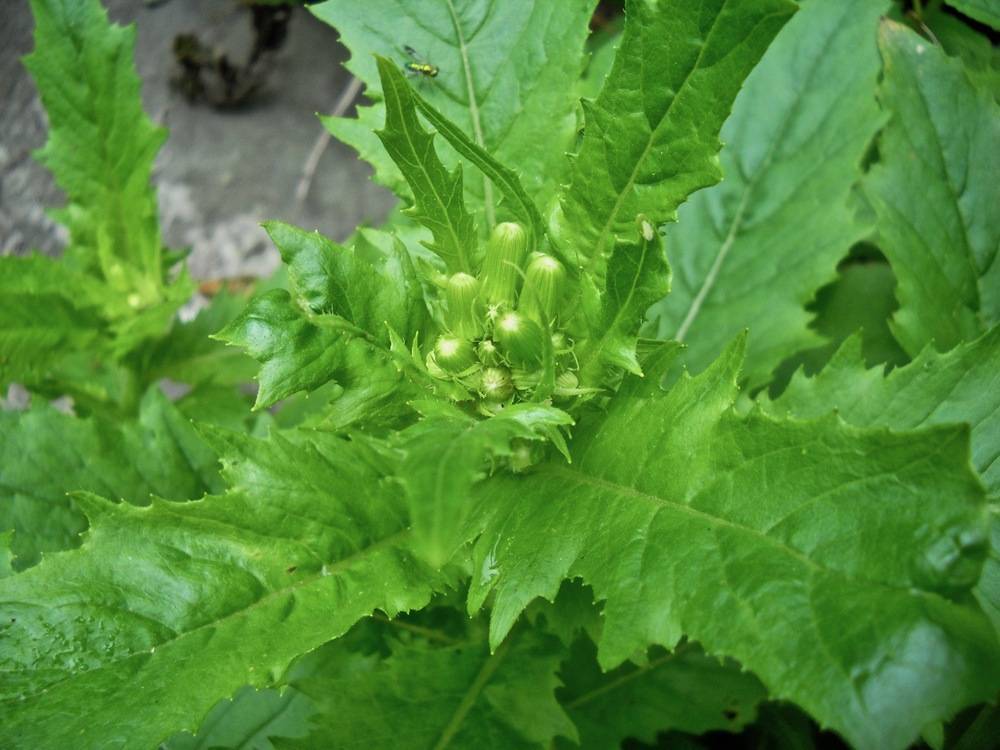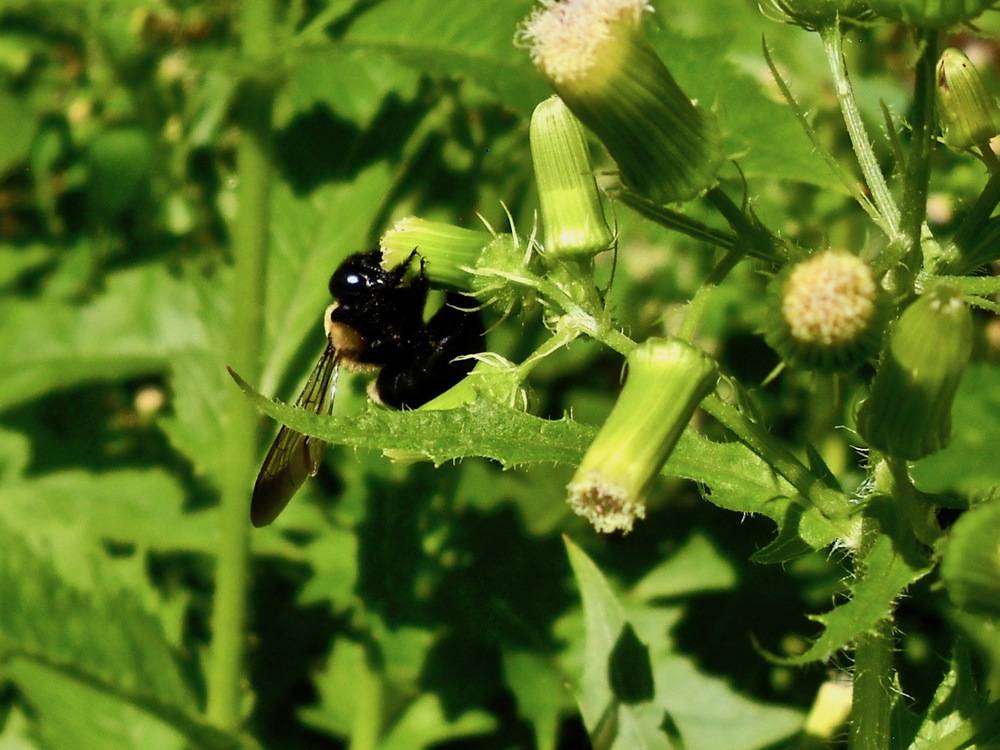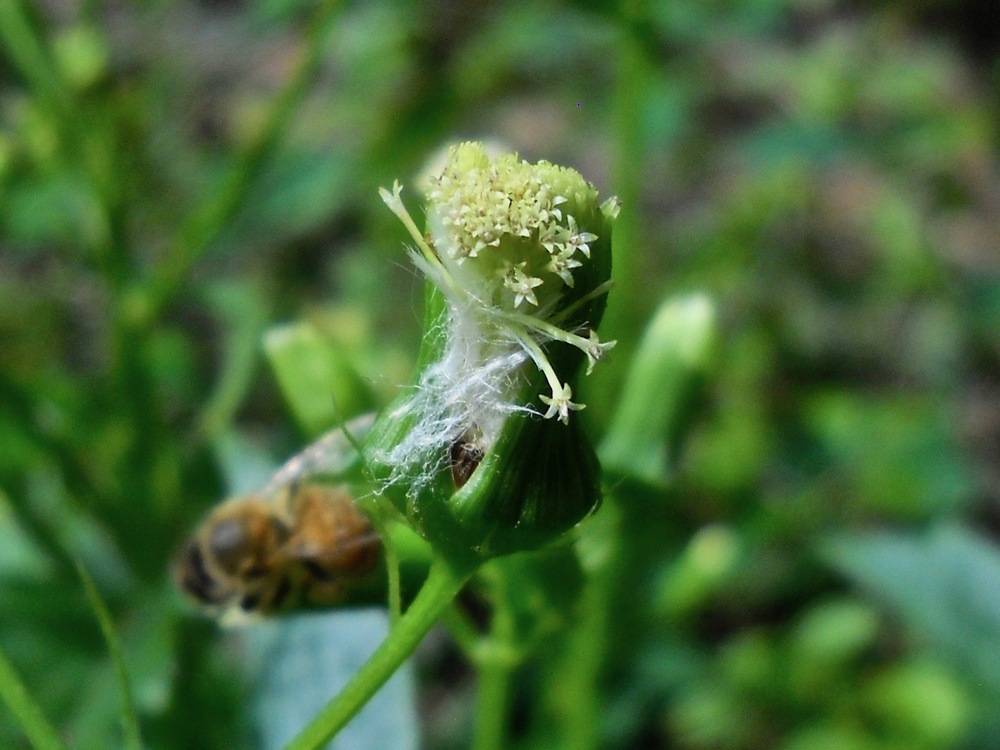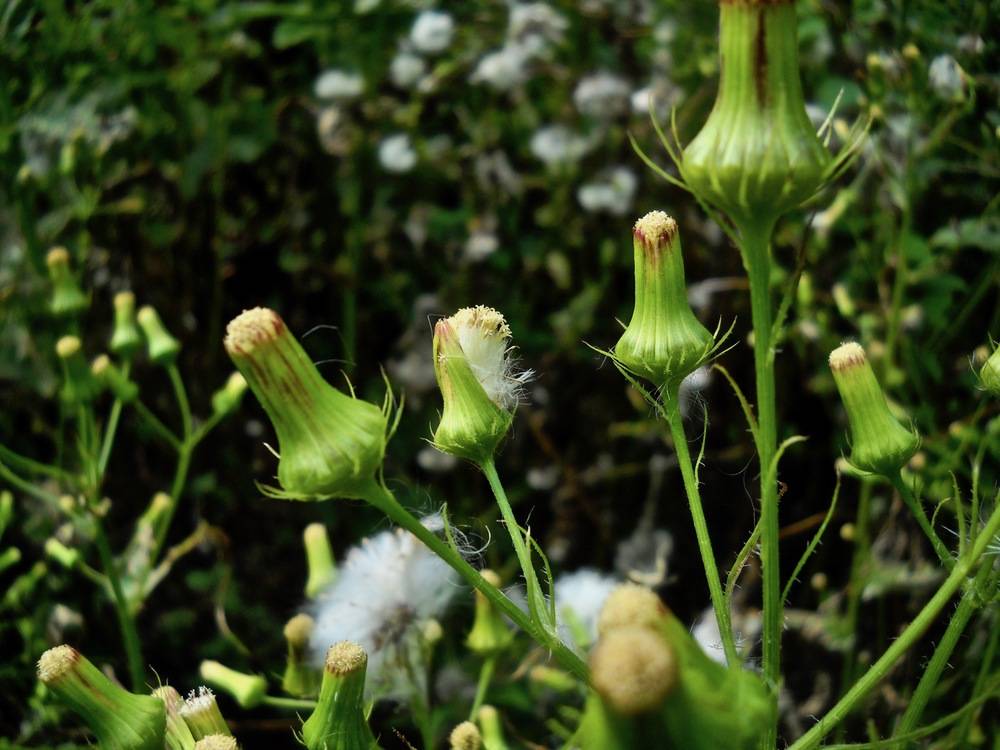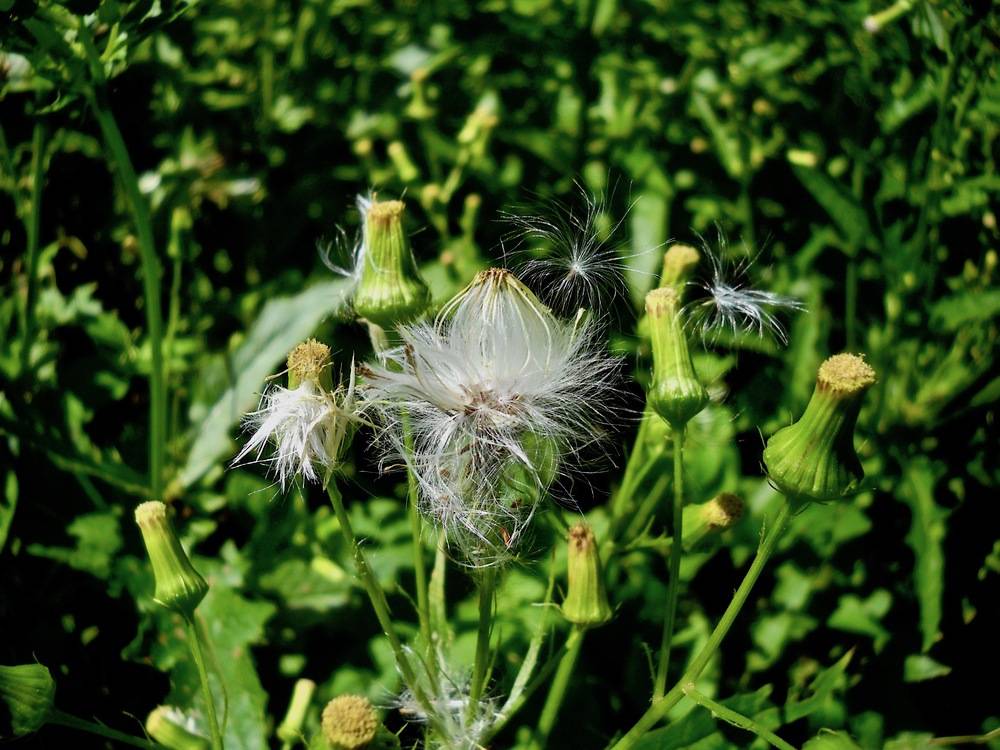American burnweed
The American burnweed belongs to the same plant family as daisies, dandelions, and sunflowers. It is a summer annual that is native to the Americas, but human activities have introduced it to many parts of the world. Although its name suggests an association with areas affected by fire, its occurrence is more often related to areas with recently disturbed soil devoid of other vegetation.
At Salter Grove, occasional plants have been observed growing with other species in edge vegetation along the Upland Trail, and in the infrequently mown clearing south of the playground. However, it is the drying mud at the margin of the vernal pond that supports a lush growth of this pioneer species. The American burnweed is known to dominate sites that experience cyclical flooding and drainage.
American burnweed starts out as a single fast-growing stem with long and narrow serrated leaves. At this stage, it resembles wild lettuce species which also belong to the same plant family. It will branch out once flowering begins with upright panicles of flower heads appearing at the top of the plant.
The peg-shaped flower head, or capitulum, consists of numerous small tubular disk florets with corollas that barely rise above the cylinder of green bracts. Only insect visitors with long tongues like bumblebees and some wasps can access the nectar deep in the floret. One study suggests that it may not even be dependent on insect pollination but rather can self-fertilize to produce an abundant crop of wind-dispersed seeds.
Despite its abundance when present, American burnweed is not popularly collected as a wild greens because of its strong taste. However, some foragers have developed recipes to showcase the distinctive flavor. This somewhat bitter and acrid plant nonetheless has numerous medicinal applications. Its other name, pileweed, refers to the use of its oil to treat hemorrhoids externally. Preparations of the plant serve variously as an emetic, laxative or alterative. Its astringency has led to its use in alleviating eczema and hemorrhages.
For more information:
https://gobotany.nativeplanttrust.org/species/erechtites/hieraciifolius/?pile=composites
https://www.illinoiswildflowers.info/weeds/plants/pilewort.htm
https://plants.ces.ncsu.edu/plants/erechtites-hieraciifolius/
https://www.cabi.org/isc/datasheet/114182
http://www.eattheweeds.com/erechtites-hieracifolia-edible-pile-driver-2/
Millspaugh, C.F. (1974). American Medicinal Plants. Dover Publications, Inc. p. 354. (Original work published in 1892)

